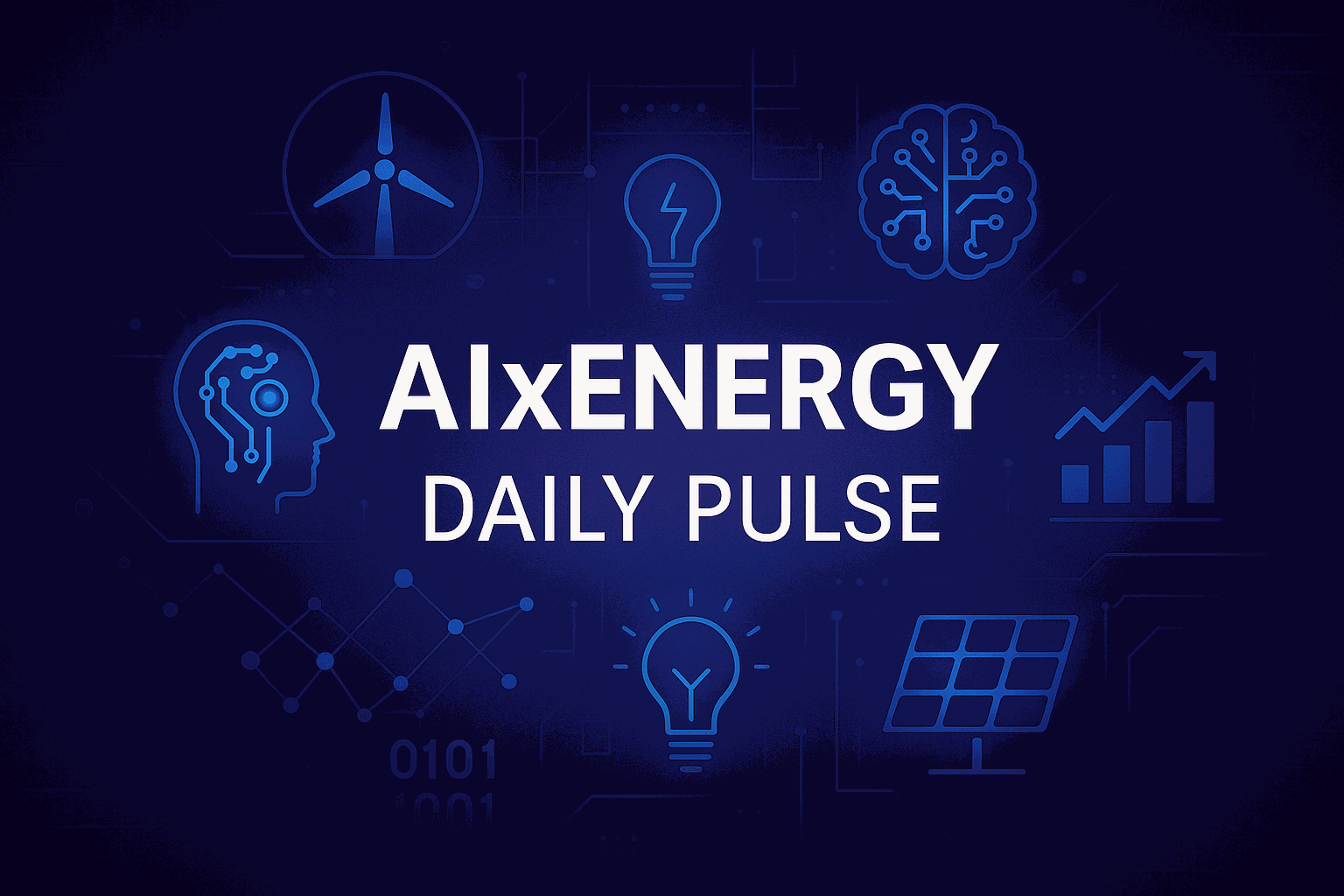07.30.25
From Desert Risk Models to Solar Robotics and Treasury Innovation: AI Reshaping Energy

In the arid expanse of Duqm, Oman, a no‑data landscape is becoming fertile ground for artificial intelligence. Arising from necessity, the paper Machine Learning Risk Intelligence for Green Hydrogen Investment: Insights for Duqm R3 Auction introduces the Maintenance Pressure Index (MPI)—an AI‑driven predictive tool built on publicly available meteorological, topographical, and climatic data which forecasts maintenance risk for hydrogen infrastructure where empirical performance data simply doesn’t exist.
The paper discusses Oman’s third green hydrogen auction (R3), showing how, in absence of historical operating benchmarks, environmental signals become reliable proxy indicators of equipment degradation. MPI thus offers a temporal risk‑score system to support infrastructure design, regulatory evaluation, and insurance modeling. By elevating climate-related uncertainty from constraint to signal, the model represents a shift from conjecture to predictive architecture in infrastructure planning.
Meanwhile in California, Nextracker has catalyzed a new operational frontier. With over US $40 million invested in technology acquisitions—including OnSight Technology, an AI‑powered robotic inspection and fire‑detection platform—Nextracker has formally launched an AI & Robotics business. This initiative also includes acquisitions of drone‑based 3D mapping provider SenseHawk IP and autonomous panel cleaning specialist Amir Robotics. With global installations exceeding 100 GW, the company appointed Dr. Francesco Borrelli as its first Chief AI & Robotics Officer to integrate these capabilities across its solar tracker systems in 40 countries.
This suite of AI‑robotic technologies signals a strategic pivot from human‑intensive maintenance to automation. Digital twins from drone mapping align site commissioning and validation. Robotic inspection feeds real‑time diagnostics to control nodes for predictive maintenance. Autonomous cleaning mitigates yield loss due to soiling. Together, these advances suggest a future where solar operations are networked, intelligent, and largely auto‑managed.
Across in New York State, PowerBank Corporation has brought online its 3.79 MW Geddes Solar Project, built atop a capped landfill. The facility now powers about 450 homes annually, but its strategic significance extends beyond energy output. PowerBank announced a Bitcoin treasury strategy: net operating income could be allocated to Bitcoin purchases, effectively turning renewable infrastructure into a financial asset with asymmetric value upside. The initiative is structured to begin acquisitions only after operational and capital obligations are satisfied—ensuring disciplined financial governance.
Together, these three stories mark a turning point in the convergence of artificial intelligence and clean energy. From predictive hydrogen planning in data-scarce deserts, to autonomous robotics managing solar infrastructure at continental scale, to digital-asset strategies emerging atop landfill-based generation, the signal is clear: AI is no longer an accessory to the energy transition—it is its operating system. Whether modeling risk where none has been measured, automating field operations once reliant on labor, or reframing energy assets as financial engines, AI is transforming how we design, execute, and capitalize the low-carbon future. This is not just a technological evolution—it is a redefinition of energy infrastructure itself.
Links
- Unrolling Dynamic Programming via Graph Filters
cs.AI – arXiv:2507.21705
https://arxiv.org/abs/2507.21705 - Machine Learning Risk Intelligence for Green Hydrogen Investment: Insights for Duqm R3 Auction
cs.AI – arXiv:2507.19529
https://arxiv.org/abs/2507.19529 - Nextracker Launches Robotics Division with OnSight Technology Acquisition
Solar Power World Online – July 2025
https://www.solarpowerworldonline.com/2025/07/nextracker-launches-robotics-division-with-onsight-technology-acquisition/ - PowerBank’s 3.79-MW New York Landfill Solar Project Now Operational
Solar Power World Online – July 2025
https://www.solarpowerworldonline.com/2025/07/powerbanks-3-79-mw-new-york-landfill-solar-project-now-operational/ - A Multi-Agent Generative AI Framework for IC Module‑Level Verification Automation
cs.AI – arXiv:2507.21694 - Bayesian Neural Network Surrogates for Bayesian Optimization of Carbon Capture and Storage Operations
cs.LG – arXiv:2507.21803 - The Impact of Large-Scale EV Charging on the Real-Time Operation of Distribution Systems
cs.SY – arXiv:2507.21759 - Privacy Artifact ConnecTor (PACT): Embedding Enterprise Artifacts for Compliance AI Agents
cs.AI – arXiv:2507.21142 - A General Safety Framework for Autonomous Manipulation in Human Environments
cs.SY – arXiv:2412.10180 - LLM-Powered Automated Modeling and Optimization of Active Distribution Network Dispatch Problems
cs.AI – arXiv:2507.21162 - 2D-Curri-DPO: Two-Dimensional Curriculum Learning for Direct Preference Optimization
cs.AI – arXiv:2504.07856 - The Carbon Cost of Conversation: Sustainability in the Age of Language Models
cs.AI – arXiv:2507.20018 - Agentic Web: Weaving the Next Web with AI Agents
cs.AI – arXiv:2507.21206 - iPanda: An LLM-Based Agent for Automated Conformance Testing of Communication Protocols
cs.AI – arXiv:2507.00378 - Humanoid Occupancy: Enabling a Generalized Multimodal Occupancy Perception System on Humanoid Robots
cs.AI – arXiv:2507.20217 - Towards Locally Deployable Fine-Tuned Causal LLMs for Mode Choice Behaviour
cs.AI – arXiv:2507.21432 - AMix-1: A Pathway to Test-Time Scalable Protein Foundation Model
cs.AI – arXiv:2507.08920 - Artificial Intelligence for the Sustainable Wine Industry
cs.AI – arXiv:2507.21098 - LLM-Based Content Classification Approach for GitHub Repositories by the README Files
cs.AI – arXiv:2507.21899 - Deep Reinforcement Learning for Real-Time Green Energy Integration in Data Centers
cs.AI – arXiv:2507.21153 - OneShield — The Next Generation of LLM Guardrails
cs.AI – arXiv:2507.21170